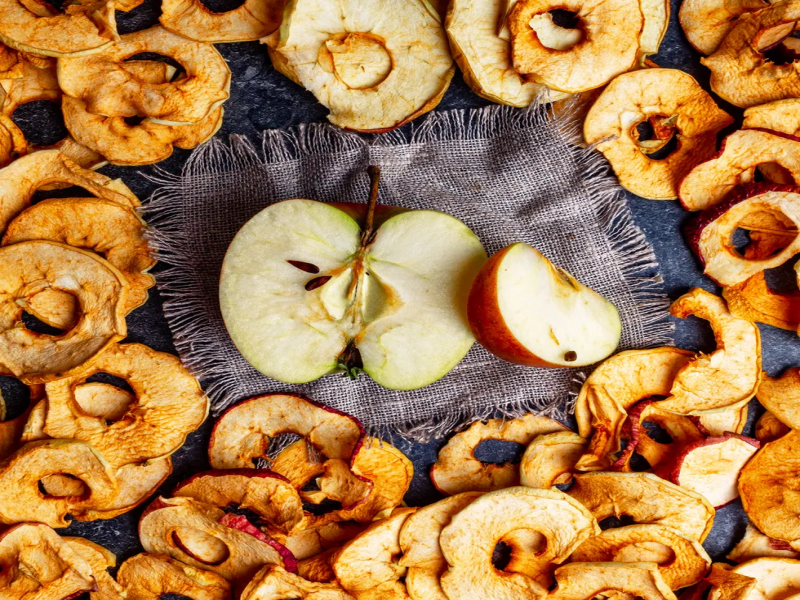There are two main types of dehydrators: Dehydrators with shelves that stack and dehydrators with pull-out shelves. The main difference between these two styles is the placement of the fan, but in our dehydrator tests, we saw minimal difference between the two styles when we dried apple slices, parsley, and beef for jerky. We also found that both styles offer models with wide temperature and timer ranges, an important feature to look for so you can control your results with precision.
Dehydrators with stacked shelves have a small fan is on the base and circulate air upwards. Stacking dehydrators often take up less space and are less expensive. Some are round and others are more rectangular in shape; we prefer the rectangular ones that create more surface area and accommodate different-shape ingredients better. Stacking dehydrators are ideal for dehydrating newbies or infrequent users.
Dehydrators with pull-out shelves have a large fan in the back that tends to circulate the air better and more evenly, which results in more consistent results. Dehydrators with pull-out shelves are typically made of more solid materials to better control the temperature. Some have metal shelves instead of plastic for those who avoid cooking on plastic.
Can you use the oven as a dehydrator?
Like ovens, food dehydrators work by circulating air at very low temperatures for an extended period of time. But instead of cooking with heat, dehydrators draw moisture out of foods so they dry out and can be enjoyed for a long time.
Most ovens do not offer the same low temperatures that a dehydrator does. Some new models offer dehydrating as an option, but it is still not ideal due to the limited amount of racks and accessories most ovens come with. We do, however, like dehydrating in a toaster oven, especially large capacity ones like the June Smart Oven and Breville Smart Oven Air, which allow you to buy additional air frying/dehydrating racks to dehydrate more ingredients at once.
Is buying a dehydrator worth it?
Dehydrators are a useful appliance for mindful eaters. They encourage eating real, whole ingredients and are a good aid in eliminating food waste. They’re particularly great for parents who try to feed their kids healthy snacks, those who suffer from allergies, and those have a hard time finding additive-free snacks in stores.
Dehydrators are also very cost-effective in the long-run. They allow you to buy produce in bulk, especially when it is in season or on sale, and store it to use later on. They’re also a great tool for gardeners who often have a surplus of ingredients on hand.
The downside of dehydrators is they take a long time to dry out food and their yield is often easy to devour in one setting. If you buy a large one with a timer, however, the process is quite hands off and rewarding.
Tips for dehydrating
Cut foods into even pieces before dehydrating. The thinner the food, the quicker it will dehydrate.
Arrange food in a single layer, with at least 1/8 inch of space in between.
For a chewy texture, dehydrate foods for less time.
Turn dehydrator off when foods are flexible but still dry. They will be come less flexible as they sit.
Foods must be fully dehydrated before storing for long periods of time. Y0u can check for this by placing dehydrated food in a sealed plastic bag. If any moisture droplets accumulate over the coarse of a day or two, the food is not fully dry. Dehydrate again.
Post time: Jun-25-2022


